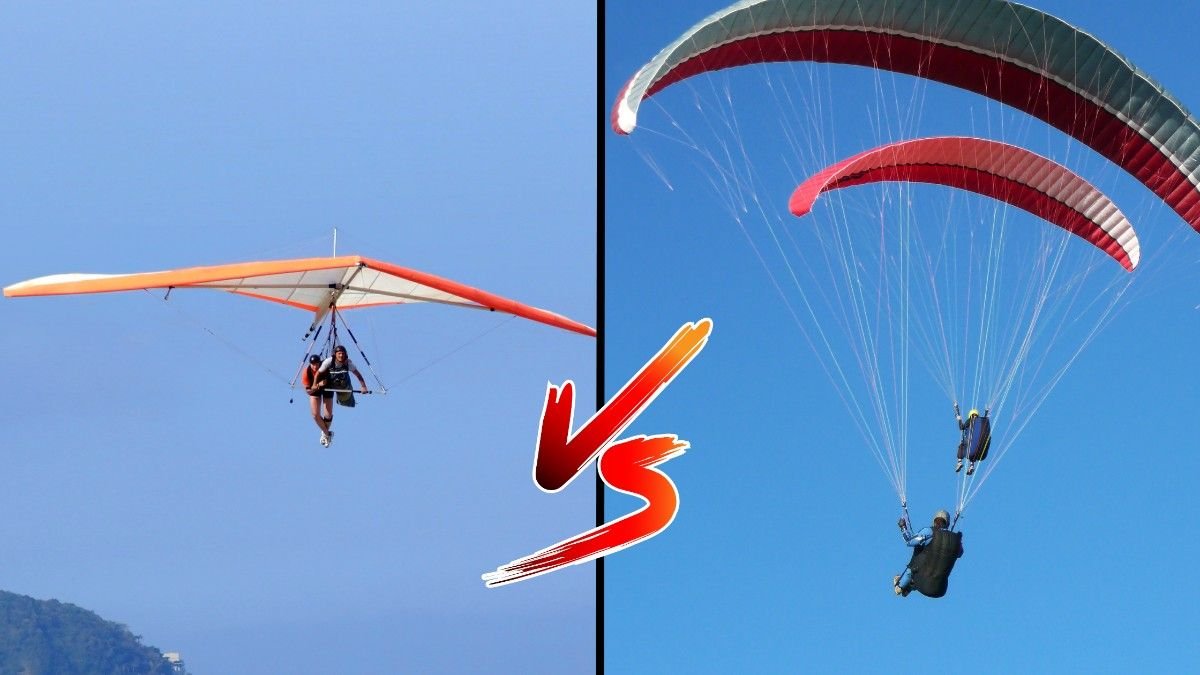Hang gliding and paragliding are two thrilling air sports that offer adventurers the chance to soar like a bird and experience the world from a unique perspective. Both sports involve launching from a height and gliding through the sky, but they are fundamentally different in terms of equipment, technique, and experience.
In this article, we’ll dive into the key differences between hang gliding and paragliding, helping you understand which sport might be best suited for your next sky gliding adventure.
Introduction to Sky Gliding Sports
Sky gliding refers to the general category of sports that involve unpowered flight through the air. Both hang gliding and paragliding fall under this category, offering exhilarating experiences for those who seek the thrill of flying.
Despite their similarities, these two sports differ significantly in terms of equipment, control, and overall experience. Understanding these differences is essential for anyone considering taking up one of these exciting activities.
Equipment: Hang Gliders vs. Paragliders
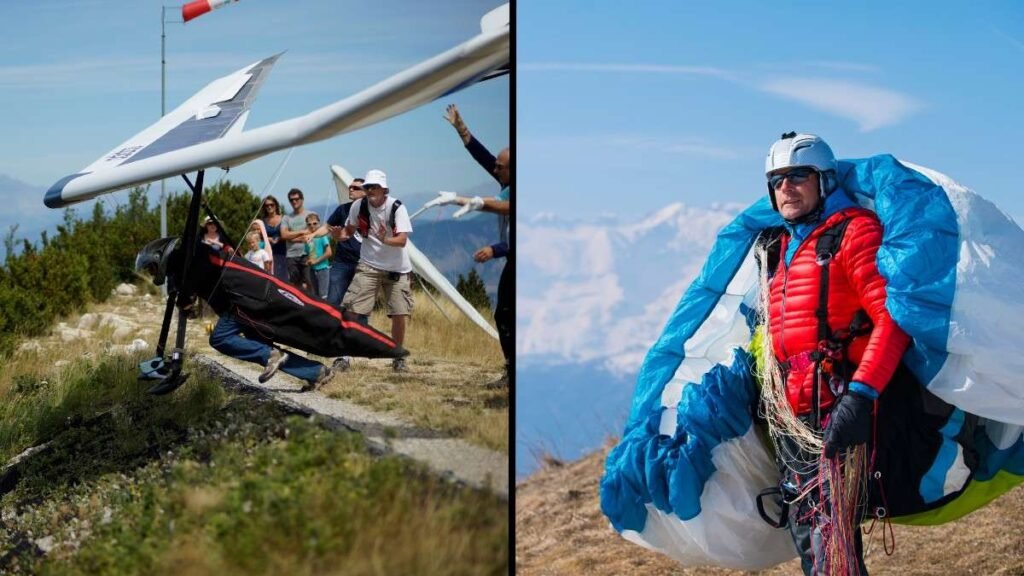
Hang Gliders
Hang gliders are rigid, lightweight aircraft with a distinctive triangular shape. The frame is typically made from aluminum or composite materials, and covered with a fabric sail.
The pilot is suspended in a harness beneath the glider, controlling it by shifting their body weight. Hang gliders are known for their ability to achieve higher speeds and cover greater distances compared to paragliders.
The structure of the hang glider allows it to be more aerodynamic, which is why hang gliders can reach speeds of up to 70 mph (112 km/h) under optimal conditions.
Paragliders
Paragliders, on the other hand, are flexible, non-rigid wings that resemble a parachute. The paraglider wing, also known as a canopy, is made from lightweight fabric and is designed to be easily portable.
The pilot sits in a harness suspended below the canopy and controls the paraglider by pulling on brake lines attached to the wing.
Paragliders are generally slower than hang gliders, with typical speeds ranging between 20-35 mph (32-56 km/h), but they offer more maneuverability and are easier to launch and land.
Key Differences in Equipment
- Portability: Paragliders are more portable due to their lightweight and foldable design. Hang gliders, while still relatively lightweight, are bulkier and require more effort to transport and set up.
- Speed: Hang gliders are faster and can cover more distance, making them ideal for those who enjoy long-distance flights. Paragliders are slower but offer more precise control.
- Control Mechanism: Hang gliders are controlled by weight shift, whereas paragliders use brake lines to steer.
Launching and Landing Techniques
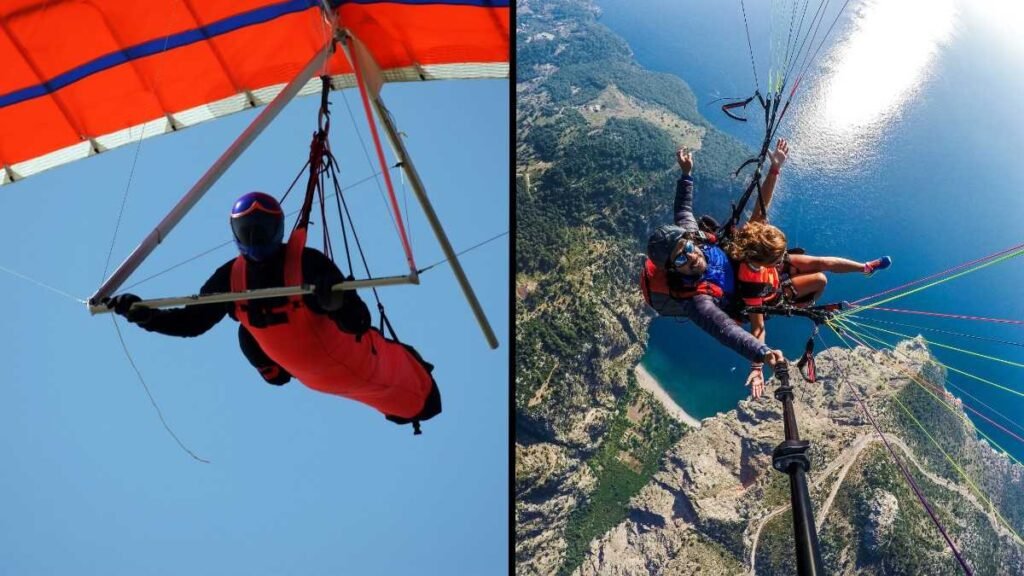
Hang Gliding Launch and Landing
Launching a hang glider typically requires running down a slope until the glider lifts off the ground. This takeoff method requires a suitable hill or mountain, though towing from flat ground is also possible. The pilot needs to maintain balance and control during takeoff to ensure a smooth launch.
Landing a hang glider can be more challenging than a paraglider due to the higher speeds and larger landing area required. Pilots must carefully manage their speed and angle of descent to ensure a safe landing.
Paragliding Launch and Landing
Paragliding offers a more straightforward launch process. Pilots can take off by running into the wind, inflating the canopy, and allowing it to lift them off the ground. This makes paragliding more accessible to beginners, as it requires less physical effort and can be done from a variety of locations.
Landing a paraglider is also generally easier due to the slower speeds and ability to make precise adjustments using the brake lines. Paragliders can land in smaller spaces, making it more versatile for different environments.
Key Differences in Launching and Landing
- Ease of Launch: Paragliding has a more beginner-friendly launch process, whereas hang gliding requires more physical effort and skill.
- Landing: Paragliders have an easier time landing due to their lower speeds and greater control over descent.
Flight Experience: Which Is More Thrilling?
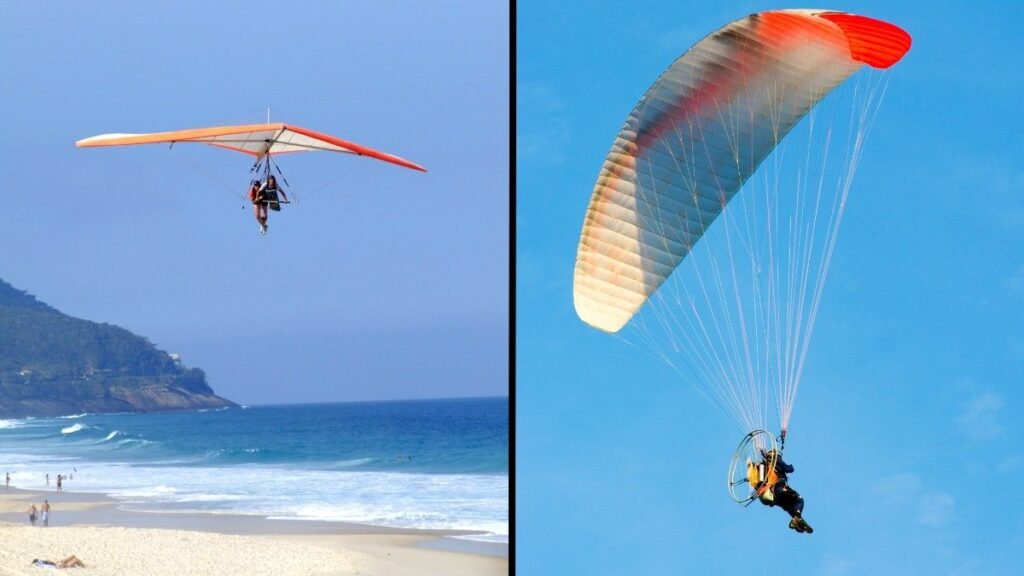
Hang Gliding Experience
Hang gliding offers a more intense and exhilarating flight experience. The rigid structure and higher speeds create a sense of speed and power as you cut through the air. Hang gliders can fly longer distances, making them ideal for cross-country flights.
The sensation of being suspended beneath a solid frame adds to the thrill, making hang gliding a favorite among adrenaline seekers.
Paragliding Experience
Paragliding, while still thrilling, offers a more serene and peaceful flight experience. The slower speeds and greater maneuverability allow pilots to enjoy the scenery and make precise turns.
Paragliding is more about the experience of floating through the air and taking in the views, making it a more relaxing option for those who want to enjoy the beauty of nature from above.
The flexibility of the canopy and the feeling of being gently cradled in the air make paragliding a more accessible and less intimidating option for beginners.
Key Differences in Flight Experience
- Thrill Factor: Hang gliding is more intense and faster-paced, appealing to those seeking an adrenaline rush.
- Serenity: Paragliding offers a more relaxed and scenic experience, ideal for those who want to enjoy the views.
Safety Considerations
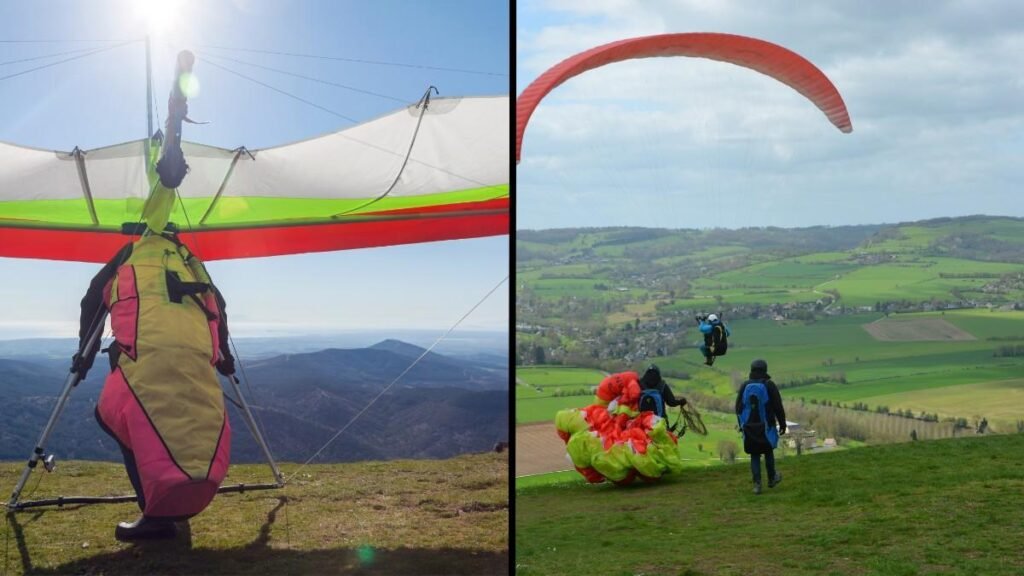
Hang Gliding Safety
Hang gliding is generally considered more challenging to master, and as a result, it may carry a higher risk for beginners. The higher speeds and need for precise control during launch, flight, and landing require extensive training and practice. However, with proper instruction and experience, hang gliding can be a safe and rewarding sport.
Paragliding Safety
Paragliding is often viewed as safer and more beginner-friendly due to its lower speeds and easier launch and landing processes. The slower pace of flight allows pilots more time to react and make adjustments, reducing the risk of accidents. However, as with any extreme sport, proper training and adherence to safety guidelines are essential.
Key Differences in Safety
- Learning Curve: Hang gliding has a steeper learning curve and may require more training to ensure safety.
- Beginner-Friendly: Paragliding is generally safer for beginners, with a more forgiving learning process.
Conclusion
Both hang gliding and paragliding offer unique and thrilling ways to experience sky gliding. Your choice between the two will depend on what you’re looking for in an aerial adventure.
If you crave speed, distance, and an adrenaline-pumping experience, hang gliding may be the sport for you. On the other hand, if you prefer a more relaxed and scenic flight with easier launching and landing, paragliding is likely a better fit.

